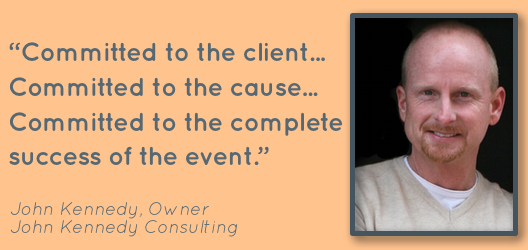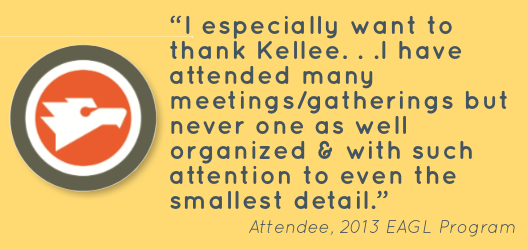A few years ago, my husband and I became fascinated with the TV show The Colony. It created a mostly-realistic (it’s TV, people, let’s suspend a little disbelief) post-apocalyptic disaster environment, put real people with a variety of skills in and told them to figure out how to survive as a group over a series of weeks. Each person had to look inside themselves and ask, “what skills did I have in my old life that are relevant here to our group’s mission of survival?” As the season unfolded, the group gathered food, built shelters, started fires, filtered water, created small engines, protected themselves from marauders, and generally figured out how to survive. It’s a modern day interpretation on surviving the military ‘scorched Earth’ philosophy.
One of the major challenges I see facing nonprofit organizations today is that many are surviving almost entirely on momentum and history. They’re doing things that have always been done (electing the new committee, producing the annual report, running the tradeshow at X venue) because inertia and momentum keeps things moving. Multi-year contracts exist. Some volunteers feel entitled, others go unengaged. Staff resources are stretched thin. The infrastructure is complicated and relies on many people playing their individual parts, not unlike an assembly line. Staff and volunteers generally are not incented to ask “what should we be doing differently?” In the meantime, the for-profit world has stepped boldly into direct competition for community, eyeballs, subscribers, participation, sponsor/ad revenue. The competitors are leaner, hungrier, and have cultivated better skills for the fight ahead. (With some slight nuance, this is true for both charitable nonprofits and trade association nonprofits.)
Honestly, I doubt that most traditional nonprofit organizations could survive a ‘scorched Earth’ scenario. Most have cultivated neither the creativity nor the competitive spirit to survive. Joe Rominiecki observed in a blog posting this week that Associations by nature have “a workforce that discovers, likes, and comes to depend on the comfort of the status quo. And it goes without saying that comfort breeds complacency.”
Your team’s creative skills, sense of competitiveness, and risk tolerance might be sharpened with a little ‘scorched Earth’ exercise. Ask yourself: if literally every dollar of revenue (and expense obligation) that your organization has coming in was gone tomorrow, what would you do? Where, precisely, would you start rebuilding? (I’m betting it wouldn’t be a 2 hour staff meeting with highly paid executives debating whether or not your annual report should be printed magazine-style or delivered in an interactive video series.)
In a scorched Earth scenario, you’d ask:
- What provides the most revenue? Currently? Potentially? (What giant potential revenue source have you not explored because “resources are too tight”?)
- What do we do that’s most unique in the marketplace today? (If you “used to be” unique and everyone’s copying you now – go forth and figure out how to be different again.)
- Who do we really need on the team? (Similarly but more painfully, whose skills aren’t useful to us anymore?)
- Where are the empty places on the map? What will it take to get there? (reference with a hat tip to David Brooks’ New York Times article on the Creative Monopoly)
- What’s your competitive advantage? Is it healthy or damaged? (If it’s your members, do you treat them like they are a critical part of your mission or an annoying afterthought?)
When you can answer these questions with some tangibles, list them and prioritize where and how you would start to rebuild your community.

If there were such a thing, the "Doomsday Clock" for old-school nonprofits has ticked notably closer to midnight in recent years.
With the competitive landscape for most organizations out there today, is this really such a far-fetched scenario? Sure, it might not evaporate overnight, but with very few exceptions, the revenue is drying up (let’s stop kidding ourselves that it’s just economic constriction, a lot of it is shifting to other outlets.) If there were such a thing, the Doomsday Clock for old-line nonprofit associations has moved notably closer to midnight in recent years.
If these answers to the ‘scorched Earth’ exercise don’t align with your current organizational structure and division of resources, you have just found the opportunities to make some difficult and likely very painful changes. But the roadmap you have just created is an alternative to near-certain death. You can’t go back to the ‘good old days’ but you can find different ways to thrive that WILL turn back the hands on that Doomsday Clock. A three-or-five year plan isn’t going to cut it. Revenue victories are going daily to the nimble. Are you among them?
Just as the post-apocalyptic scenarios may be a little farfetched (for all but the least optimistic among us,) I do still feel a little comfort knowing I have multiple gallons of freshwater and a generator in the basement. With some courageous leadership, virtually ANY organization can create a team that will not only survive, but thrive in a ‘scorched Earth’ scenario – but you’ll have to burn some old ways of doing things & be ready to eat some of your sacred cows for nourishment along the way.
(Stay tuned for Part II – How to Start a Bonfire & Grind Up the Cow)
Cover photo credit: George Schick




